Innovation and creativity in the feature space is alive and well at the 15th edition of Cartoon Movie in France.
A Spanish 3D blockbuster about an Indiana Jones-type adventurer (Tad, the Lost Explorer), a hand-crafted animated project about the friendship between a mouse and a bear (Ernest & Celestine), and a full-length CG-animated adventure starring Dick Bruna’s preschool sensation Miffy are three of the eclectic titles featured at the Cartoon Movie event held in Lyon, France March 8-10 this year. The success of this unique event is a true testament to the variety and sheer number of animated movies that have been produced and distributed in Europe over the past few years.
“High-quality and very creative projects are presented again this year in Lyon, whether commercial films for children or films addressing social issues aimed more at an adult audience,” says Cartoon Movie’s general director Marc Vandewyer. “This is the cultural diversity, the richness of Europe.”
Vandewyer says the organization has made further efforts to invite more distributors and sales agents from non-European countries. In addition, a whole day is now devoted to gaming ventures in the continent. “Animated features are the only audiovisual genre capable of selling better in the international market than its home market,” he adds.
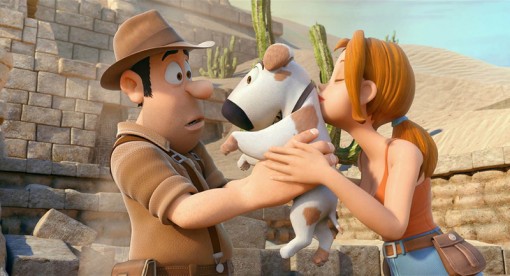
Among the features presented in their entirety are Benjamin Renner, Vincent Patar and Stéphane Aubier’s Ernest & Celestine, Thomas Bodenstein’s Knight Rusty, Jan Rahbek’s Marco Macaco, Kari Juusonen and Jørgen Lerdam’s Niko 2, Enzo d’Alò’s Pinocchio, Ute von Münchow-Pohl’s Raven the Little Rascal and Enrique Gato’s Tad, the Lost Explorer.
Seven films will be presented under the “In Production” banner: Alessandro Rak’s The Art of Happiness (Italy), Olivier Jean-Marie’s Oggy and the Cockroaches (France), Eric Omond’s Loulou’s Secret (France, Belgium), Torill Kove’s Hocus Pocus, Alfie Atkins (Norway, Denmark) and Esben Toft Jacobsen’s Beyond Beyond (Sweden, Denmark). In addition, 19 films are presented during the “In Development” sessions, while 21 titles are discussed “In Concept.”
Cartoon Movie is one of the most popular co-production events designed to promote European co-productions and allow producers to pitch their projects to secure financing, find international partners and interest international distributors and sales agents. Over 50 pitch sessions are planned for the upcoming edition, with over 700 industry professionals expected to attend the program.
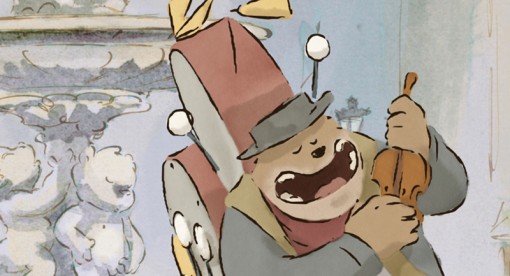
France will be represented by 15 projects, while the Nordic countries will offer 10 projects, followed by Germany (five), Spain (four), United Kingdom (three), Poland (three) and the Netherlands (three). This year, 25 percent of the projects are produced in stereoscopic 3-D and 16 percent of the films target young adults and adults.
To learn more about the 15th edition of the event, visit www.cartoon-media.eu.
Cartoon Movie Pics at a Glance: Here are quick takes on some of the new features presented at the event:
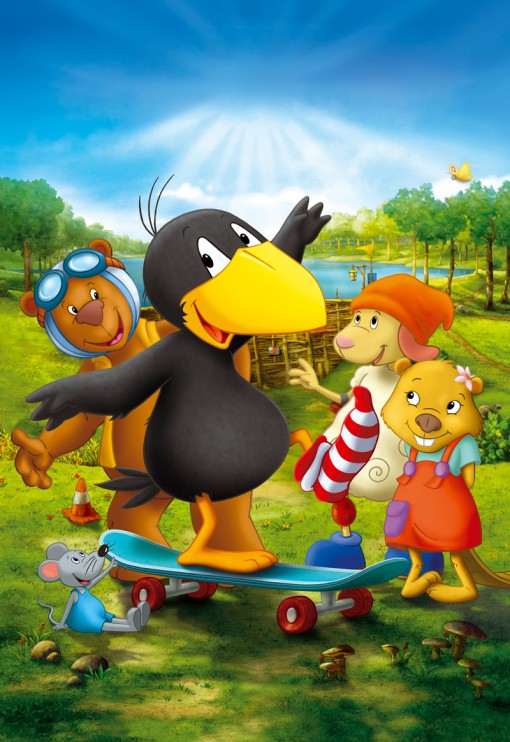
Raven the Little Rascal
Directed by: Ute von Münchow-Pohl, Sandor Jesse
Produced by: Akkord Film, Studio 88 (Germany)
Synopsis: Based on a popular children’s book series by Annet Rudolph, the movie follows the adventures of the mischievous Little Raven, who has to ask for help from his friends Woolly the Sheep and Eddie the Bear after he damages the dam at the end of their forest.
Standout Qualities: “The look of the film is traditional, high-quality, multi-layered 2D with well animated characters and awesome looking backgrounds like in the Disney movies back in the days before CGI,” says producer Dirk Beinhold. “This makes it very appealing to younger audiences, even to first-time moviegoers. But we also have an excellent stereoscopic 3-D version of the seven-layered 2D-animation available.”
Budget: According to the producers, the film cost about $6 million.
Success Story: The producers point out that when Madagascar 3 opened in Germany five weeks after Raven, the box office numbers only dropped about 4%, while most of the other films dropped 30-40%! Half a million tickets were sold in German speaking territories so far. The film will open in France in March.
Biggest Challenge: “Working with our limited budget and yet making a movie that looks like a $25 million production,” says Beinhold. “I was new to the world of animation with my background being in story development and international co-financing. But I learned that a good story is just as important in animation as it is in real live action.”
Cartoon Movie Connection: The film’s co-producer Roland Junker of Studio 88, has presented projects in the past at Cartoon Movie. Raven is sold worldwide through Beta Film/Wunderbox. The producers are also staring production on the next Raven the Little Rascal film and are hoping to presell some territories as well.
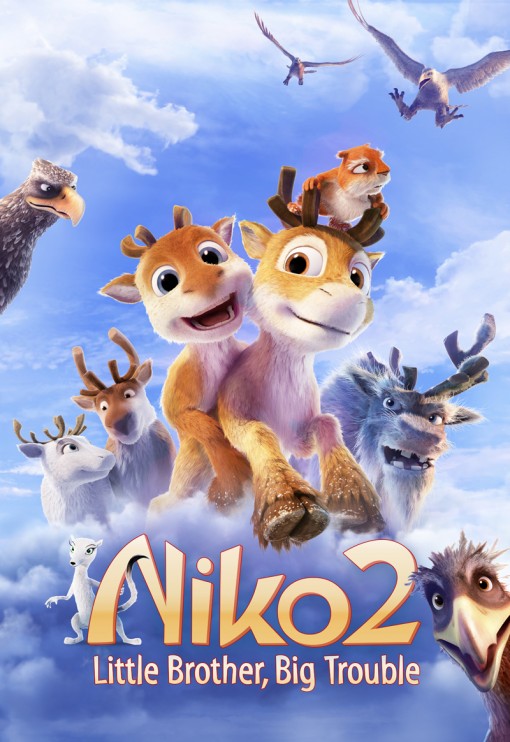
Niko 2: Little Brother, Big Trouble
Directed by: Kari Juusonen, Jørgen Lerdam
Produced by: Anima Vitae (Finland), Ulysses Filmproduktion GmbH (Germany), A.Film (Denmark), Tidal Films/Magma Productions (Ireland)
Synopsis: On the night before Christmas, Niko the reindeer must deal with his mom getting re-married and has to look after his little stepbrother.
Inspiration: “We waited quite patiently for the right idea for the sequel, as we wanted to make a movie that would hopefully be better than the first one,” says producer Antti Haikala. “The most important content in the Niko films comes from daily life, even if the movie is an exciting adventure as well. So the main inspiration was to find this daily life content which was of course Niko having to deal with his stepbrother and putting him into a totally new and challenging situation as a kid.”
Budget: About 7.3 million euros or $9.5 million.
Standout Qualities: “Our story deals with very basic issues of being a kid in a contemporary family situation,” says Haikala. “Blending this with exciting adventure and the universe in beautiful Lappish wilderness makes the film something that is not often seen on the big screen.”
Biggest Challenge: The producers note that dividing the work between many studios and having a modest budget were their biggest challenges. “Finding ways to create high quality and maintaining it throughout the film in such circumstances is always challenging, but at least our audience and the team (which is often far more critical) has been pleased with the results,” says Haikala.
Tools: The stereoscopic CG animation was created using Maya, rendered with RenderMan and composited with Nuke. Alembic geocaches were used in the pipeline.
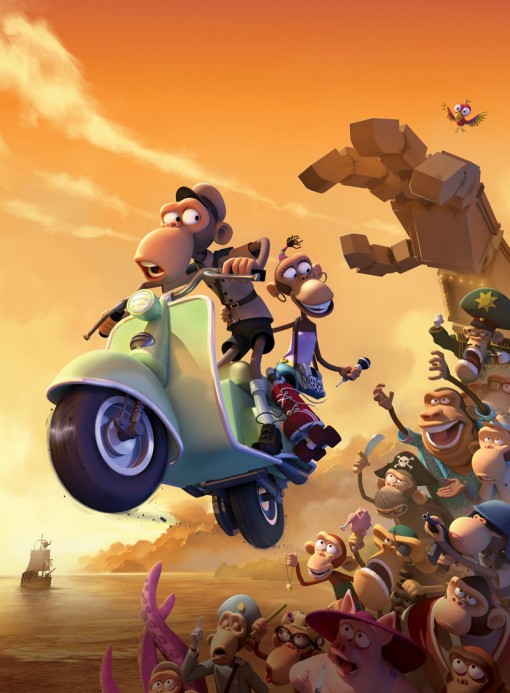
Marco Macaco
Directed by: Jan Rahbek
Produced by: Nice Ninja ApS (Denmark), Sola Media GmbH (Germany)
Synopsis: In his dreams, Marco Macaco is a cool cop solving major crimes, but in real life, he is just a beach officer on a tropical island where nothing seems to happen. His hopes to win beautiful Lulu’s heart get shattered when charming Carlo arrives on the island to build a gigantic monkey-shaped casino right on Marco’s beach.
Inspiration: As writer and producer Thomas Borch Nielsen tell us, the film’s director Jan Rahbek had made a very funny graduation movie called The Space Monkeys at The Danish Film School. He has a special love for monkeys and wanted to continue with a movie in the same slapstick comedy style.
Budget: About 2.5 million euros, or $3.4 million.
Standout Qualities: “Marco Macaco is a true slap-stick comedy, which we don’t see that often around anymore,” says Borch Nielsen. “Combine that with a giant robot, a sea monster, pirates and a scooter, and you have a comedy cocktail you cannot resist!”
Challenges: “To produce a movie with a very high quality of animation on a low budget is always a challenge,” notes Borch Nielsen. “But luckily the pipeline was thought through and the team very talented, so we managed to do it.”
Tools: The characters are CG-animated in Maya. The backgrounds were made as matte paintings to create a more organic feel. The production was rendered with 3Delight and composed in Nuke.
Cartoon Movie Connection: Marco Macaco has been presented at Cartoon Movie in all categories from “Concept” through “Development” and “In Production” to this year’s “Final Movie” version. “The event has been a great help throughout all stages of the production,” says the producer.
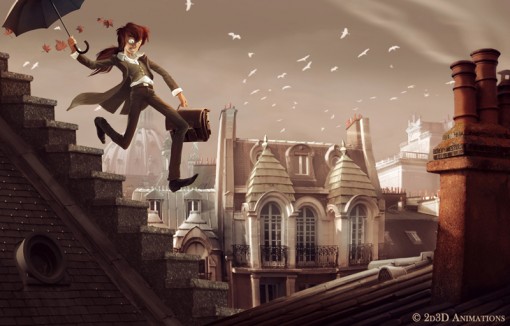
Rise of the Zelphire
Directed by: Arthur Qwak
Produced by: 2d3D Animations (France)
Synopsis: In this alternate 19th century universe, traumatized children have developed supernatural powers. Led by Sylvan, they join forces to end the reign of darkness and to fight against Baron Vilnark’s evil plans. Based on the graphic novel by Karim Friha.
Inspiration: Friha was inspired by the writings of Victor Hugo, Charles Dickens and Jules Verne. Professor Wernes, one of the main characters of the story, is a caricature of German naturalist, geographer and explorer Alexander von Humboldt . The graphic style is an homage to the works of Goya, Gustave Doré, Manet, Arthur Rackham and Tim Burton.
Standout Qualities:“The right to be different is the main subject of The Rise of Zelphire,” says the film’s producer and 2d3D founder Florent Mounier. “It’s a sensitive issue that concerns all of us: This is the reason we’ve been captivated by the story and the world of Karim Friha! Our film has a real vision on two different levels—it carries a timely message of acceptance and also offers unique visuals with characters that look like realistic puppets.”
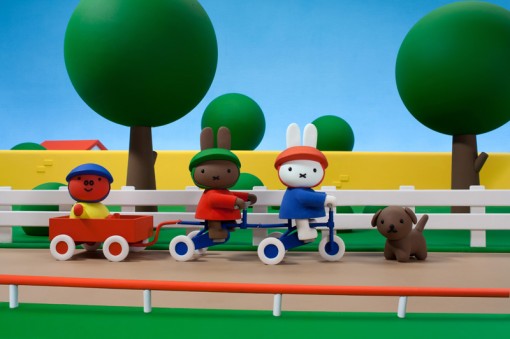
Miffy: The Movie
Directed by: Hans Perk
Produced by: Telescreen Filmproducties, Mercis, KRO Youth (Netherlands), A. Film (Denmark)
Synopsis: Miffy the rabbit’s first feature revolves around a treasure hunt with her friends through the zoo. In the process of solving the five clues Father and Mother Bunny give them, Miffy and pals meet all kinds of animals on their fun adventure.
Inspiration: Producer Sjoerd Raemakers, who has been involved in Miffy projects for over 15 years, explains that the idea for a film emerged out of the success of the 3D animated TV series (2003) and its resulting 24- and 11-minute specials. The film is based on the works by Dutch children’s author and illustrator Dick Bruna, whose first Miffy book was published in 1955.
Budget: 3.4 million euro, or about $4.5 million.
Standout Qualities: Miffy’s many fans around the world (the books have sold over 85 million copies) have seen her adventures in short format, but this colorful stop-motion animated film will be her first bow on the big screen.
Challenges: “Back in 2003 we started discussions with the rights owners, Dick Bruna/Mercis BV about the general idea. We did not immediately get their consent, as Miffy was and is a classic and therefore any audiovisual works would be approached with great reserve,” Raemakers explains. “However, we were granted the right to investigate matters, by for instance testing existing materials in a cinema-like environment.” The project wasn’t officially agreed on until 2005. Raemakers adds that production challenges were creating international appeal and remaining true to Bruna’s work.
Cartoon Movie Connection: Raemakers has first hand experience with the value of the event: “We made the first presentation [at Cartoon Movie] and then met with 6 Sales from Spain, who came on board as the international sales agent.”
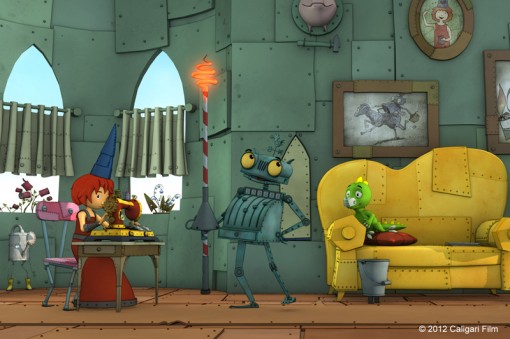
Knight Rusty
Directed by: Thomas Bodenstein
Produced by: Caligari Film (Germany)
Synopsis: Knight Rusty is no ordinary hero—but the scrap metal knight likes to brag about his bravery, even though he prefers a life of comfort. It’s only when he realizes he might lose his beloved damsel, Bo, that he gets his act together. With the little dragon Coke by his side, Rusty must save the entire kingdom of Scrapland from the rule of the Evil Knight.
Inspiration: As producer Gabriele Walther points out, the film is based on the Ritter Rost children’s books by Jörg Hilbert and Felix Janosa. “What fascinated me was the unique world of Scrapland, where all the characters are created from recycled scrap pieces,” says Walther. “Knight Rusty is a cash register, the king is a toaster that starts to glow when he’s angry. Horses are built from motorcycles; tools, teapots and cups have an opinion and move. In total we have more than 400 moving objects all coming together in an incredible battle scene. It’s an homage to the mechanical world and gives recycling a very creative approach.”
Budget: 10 million euros, or $13.4 million. “When we screened the film to a professional international audience, people came back to me asking what our budget was, estimating it to be 40 million euros. When I told them the real budget, they couldn’t believe it!” Walther recalls.
Standout Qualities: Walther believes the unique design and setting of the story combined with its action and strong comedy elements are highlights of the film. “During the premiere of Knight Rusty, kids where jumping in their seats with joy contaminating their parents with laughter. This is when I knew, we’ve done a good job,” she notes. The producer adds that they combined an American approach to storytelling with European technical expertise to create 3D worlds without a “Pixar budget.”
Challenges: Walther cites the crowd scenes, such as the huge battle and a tournament. Certain 3D models, like the twin-headed dragon, also proved technically challenging.
Tools: The CG, key-frame animation was done in Maya.
Cartoon Movie Connections: The producer notes that Knight Rusty made its Cartoon Movie debut last year during the “In Progress” program with just the story, character and set designs. “We are very happy to present the completed film at this year’s Cartoon Movie and are convinced the film will draw the attention of many participants,” she adds.












